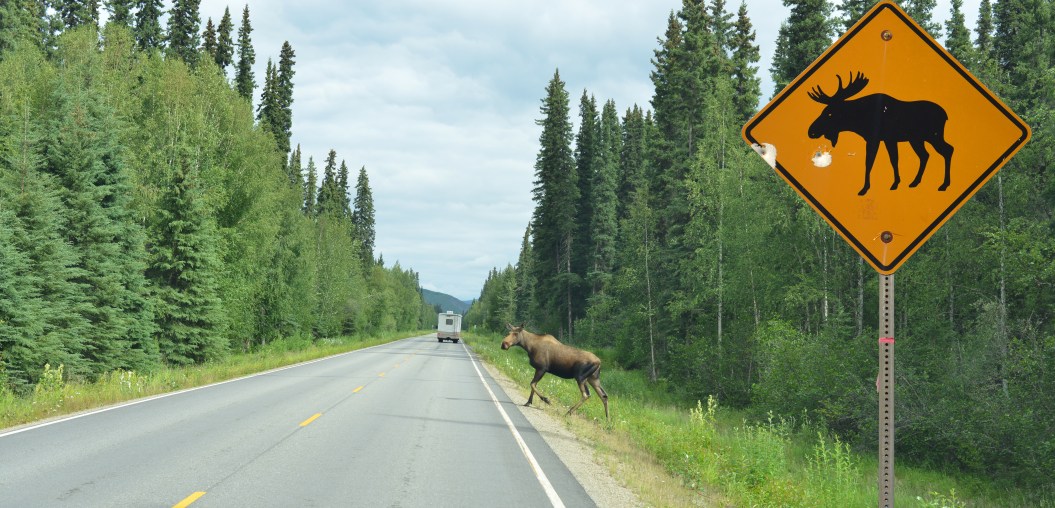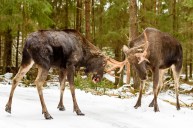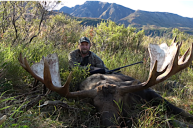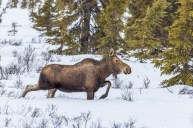The only thing I love more than a dinner party is one where there's locally harvested or foraged food. Luckily for me, those are pretty easy to host where I live in Alaska. From high-bush cranberries and blueberries to massive halibut and all of the ungulates you can think of, Alaskan dinner parties are stocked with the tastiest local food imaginable.
When I hosted one last month, my friend Andrew brought moose steaks. While that's not an entirely unusual dish to bring in the best moose hunting state, this particular moose was special. It was actually roadkill, harvested through an officially sanctioned roadkill program. While there are several states where salvaging roadkill is legal, nowhere does it quite like Alaska in terms of volume and quality of meat.
How the Alaska Roadkill Program Works
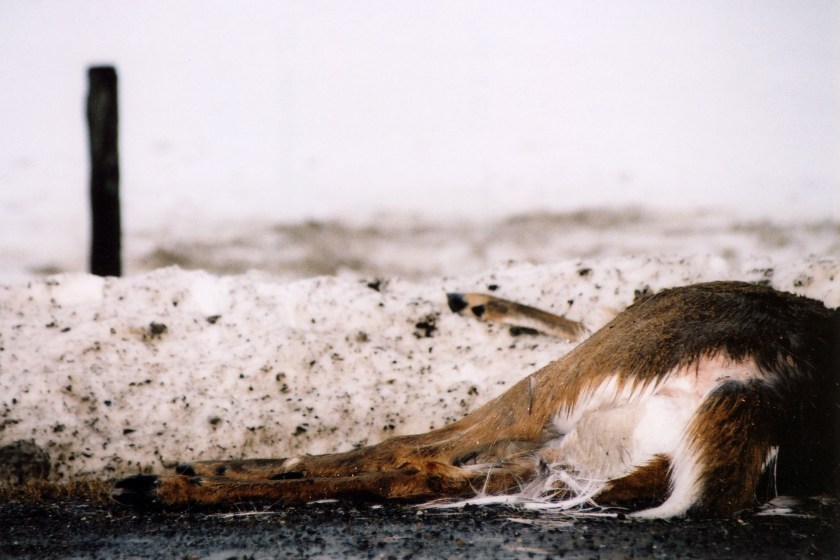
Getty Images, bryannormandin
The Alaska Department of Fish and Game (ADFG) estimates that vehicles hit over 800 moose on the state's roads each year. With some Alaska moose weighing over 1,200 pounds, that's a lot of meat potentially going to waste. That's why the Alaska Department of Public Safety has come up with a solution to prevent these huge animals from rotting by the side of the road: the Alaska Wildlife Troopers Roadkill Program.
Through the program, Alaska residents may sign up as "salvage teams." Salvage teams must be made up of two or more people, 18 years or older, who live in the geographic area for which they apply—Alaska's a massive state, and salvage teams must be able to respond to a roadkill incident quickly.
Applicants are then put on a call list. When a moose is hit and killed by a vehicle, wildlife troopers call salvage teams, starting at the top of the list. If a team doesn't answer the phone or isn't able to respond in a timely manner, it gets bumped to the bottom of the list. Troopers keep calling until a salvage team agrees to recover the moose.
Some teams wait years for the right call, turning down calls because they're out of the area or at work—and getting bumped to the bottom of the list. It takes a little luck to get to the top of the roadkill list, and a lot of luck to be in the right position when you get the call. Most of my friends, myself included, have our names on the list, making up "salvage teams" with our families, partners, or friends. A few of us have been lucky enough to be called, while others have simply joined the processing or picked up a portion of a friend's haul; it sometimes takes a village to get a moose home and cut up into steaks and burgers.
The Call You've Been Waiting For
While you may wait years to be called, once the phone rings, it's all systems go. As every hunter knows, as soon as the blood stops circulating in an animal, the clock starts ticking. The quicker you can get to the animal and field-dress it, the better. Alaska is cold enough a lot of the year to keep a dead animal fresh; but summer temperatures, especially in direct sun on the side of the highway, can still reach well over 70, spoiling meat.
The ADFG also stipulates that salvage teams must ensure that the entire moose, including its guts, will be removed from the kill site and properly disposed of. That means you'll likely have to remove the moose from the scene before processing it.
There's only one problem: As already stated, Alaska moose are big—like, won't-fit-in-the-back-of-your-pickup-truck big. My friend Andrew's neighbor got the opportunity to get a roadkill moose and immediately called Andrew for help and the use of his flatbed trailer. They ended up winching the cow moose onto the bed, and it was a tight fit. Another friend was at work when he got the call, and he called a tow truck operator who was willing to go out to the moose and load it up, as if it were a disabled car.
And then there's the processing once you get the moose home. While having to butcher a kill is an expected part of any successful hunt, having to process a thousand-pound animal at the drop of the hat is another matter. Most people on salvage teams are hunters as well, so they have all of the tools needed to process a moose at the ready. If not, teams will haul the moose to a processing facility to have it professionally butchered. Andrew and his neighbor hung up their moose in his yard and processed most of it at home, sending some meat out to be made into sausages.
Many hands make light work, though, and that old adage is just as true with processing a moose. When another friend got the call, she rounded up two other women to help process the moose. It turned into an all-day community event, with everyone walking home with some roadkill moose at the end of the day.
What You Can Expect From Roadkill Moose
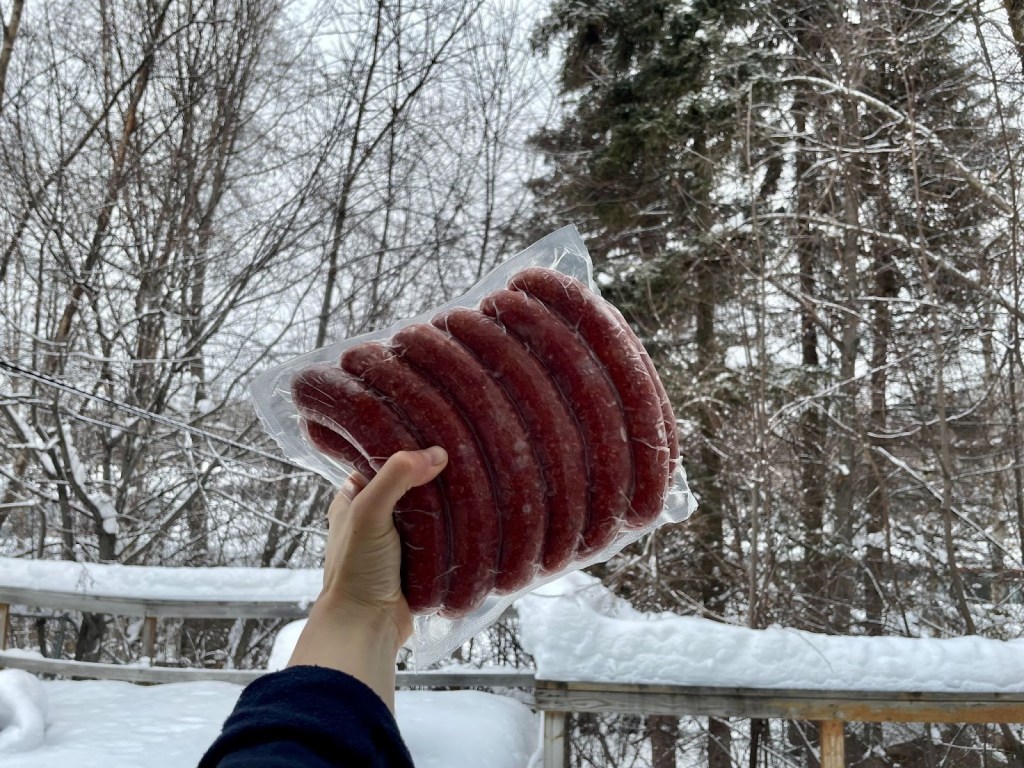
Chelsey Cook for Wide Open Spaces
The ADFG issues a disclaimer that the moose the salvage teams recover is "luck of the draw" and the agency doesn't guarantee the condition or quality of the meat. However, my friends on salvage teams have all recovered animals in good shape that produce plenty of delicious meat.
Unlike smaller game that may get pulverized by a vehicle collision, moose are so tall that their mass may be largely undamaged in a car accident. Many collisions swipe their legs out from underneath them, leaving them broken; Alaska troopers must humanely dispatch these animals, but they still count as "roadkill." For salvage teams, these are the best kind of roadkill, with no body damage to speak of—which was true of Andrew's moose. Outside of a broken leg and bullet hole from where the troopers had put the animal down, the moose was in fantastic condition.
At our dinner party, we seared the moose steaks in a buttered cast-iron skillet and then broiled them. A little salt and pepper, and a salad on the side, was all that was needed to complete the meal, with some red wine to wash it down. We'd all had our fair share of moose over the years and agreed that the roadkill moose was one of the best-tasting. And while the hard work of hunting is part of the fun, having a moose with minimal effort still tasted just as satisfying.
READ MORE: 5 Proven Ways to Make Wild Meat Taste Less Gamey
